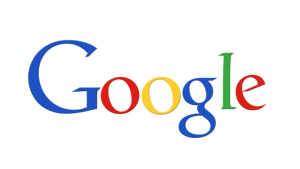 Google has responded to the major advertiser boycott of YouTube, after brands found their ads appearing next to hateful and extremist videos, with a plan to introduce “tougher” ad policies, increased controls for marketers, and a hiring spree to increase its capacity to review offensive content.
Google has responded to the major advertiser boycott of YouTube, after brands found their ads appearing next to hateful and extremist videos, with a plan to introduce “tougher” ad policies, increased controls for marketers, and a hiring spree to increase its capacity to review offensive content.
The announcement, made in a blog post on Tuesday by Google’s chief business officer Philipp Schindler, comes on the same day The Times reported more than 250 companies – including global brands such as HSBC, McDonald’s, Toyota and Heinz – have suspended their spending with the video ad platform. Last week, it appeared the issue was just affecting UK spend, but this report suggests it has now become a global concern.
The Times’ initial investigation into brand safety on YouTube in February, which uncovered brand ads funding videos posted by hate preachers and supporters of terrorist groups, thrust the issue into the spotlight. Content creators are paid on YouTube through an ad revenue share scheme.
In the blog post published Tuesday, Schindler said “Recently, we had a number of cases where brands’ ads appeared on content that was not aligned with their values. For this, we deeply apologize. We know that this is unacceptable to the advertisers and agencies who put their trust in us. That’s why we’ve been conducting an extensive review of our advertising policies and tools, and why we made a public commitment last week to put in place changes that would give brands more control over where their ads appear.”
What Google is announcing
From Tuesday, Google says it will take a “tougher stance” on hateful, offensive, and derogatory content. That will include removing ads “more effectively” from content that is “attacking or harassing people based on their race, religion, gender or similar categories.” Google is also looking at ways to block impersonators of legitimate content creators from collecting ad revenue from the YouTube Partner program.
“Finally, we won’t stop at taking down ads. The YouTube team is taking a hard look at our existing community guidelines to determine what content is allowed on the platform-not just what content can be monetized,” the blog post said.
Google also said “in the coming days and months” it will introduce more tools for advertisers to be able to control where their ads appear across YouTube and other third-party sites that are monetized through Google’s advertising platforms.
Those updates will include a change of the default settings on the existing tools so they meet “a higher level of brand safety,” more account-level controls so it is easier for advertisers to exclude specific sites or channels from their AdWords for Video and Google Display Network campaigns, and “more fine-tuned controls” for brands to choose where they want their ads to appear. Another update due “in the coming months” is the expansion of video-level reporting for all advertisers so they can have more transparency about where their ads ran.
Google also says it plans to staff up in this area.
“We’ll be hiring significant numbers of people and developing new tools powered by our latest advancements in AI and machine learning to increase our capacity to review questionable content for advertising,” the blog post said.
Schindler signed off the blog post by saying that Google believes the new updates will “significantly strengthen our ability to help advertisers reach audiences at scale, while respecting their values.” The company has promised to act “swiftly” and “carefully,” to ensure it does not harm the legitimate publishers and creators that use its services.
The blog post comes a day after Google’s EMEA boss Matt Brittin apologized on stage at annual industry event Advertising Week Europe in London about the issue of ads appearing next to questionable content on its services. In a pre-briefing with journalists on Monday morning, Brittin said the issue was affecting “pennies not pounds” of advertising spend.
Google has been summoned to appear in front of the UK government for the second time over the issue this week to provide a timetable on the work it is doing to ensure ads for taxpayer-funded services do not appear next to inappropriate content. The Times found ads for the Home Office, Royal Navy, Royal Air Force, Transport for London, and the BBC on hate videos as part of its investigation.
Pivotal Research analyst Brian Wieser downgraded Google’s stock from “buy” to “hold” on Monday, following the advertiser boycott and a recent rise in the company’s share price.
“Although spending by advertisers who have announced their intention to suspend spending on YouTube and other Google properties is relatively small so far, we think that awareness of the incident will marginally curtail global growth this year vs. prior expectations, leading us to reduce our price target on Alphabet slightly, to $950 vs. $970 previously,” Wieser wrote in a research note.
3 mins read
Google makes changes in their hiring procedures after advertisers’ boycott of YouTube

Tags:
- 000 in investment
- Amazon makes its biggest-ever investment in India yet
- Global financial technology investment up 10% in 2016: Report
- Housing.com merge
- ItzCash makes equity investment in fintech startup Finly.io
- LeEco gets fresh $2.18 billion investment from Sunac
- PropTiger
- Snapdeal appoints Jason Kothari to head strategy and investment opera...
- to raise $55 million in fresh investment
- UberPITCH winners announced; each to get $50

